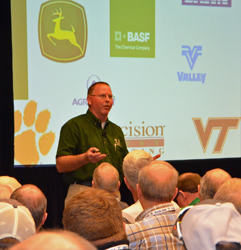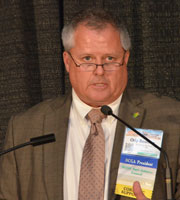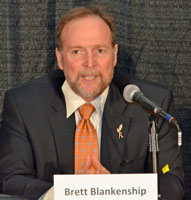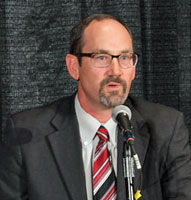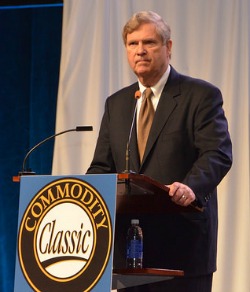 Many in the agricultural community may not be aware that USDA has an office which is charged with helping farmers prepare for climate change. Climate Change Program Office director Bill Hohenstein (pictured left) talked some of their work during the Bayer CropScience Ag Issues Forum last week in Phoenix.
Many in the agricultural community may not be aware that USDA has an office which is charged with helping farmers prepare for climate change. Climate Change Program Office director Bill Hohenstein (pictured left) talked some of their work during the Bayer CropScience Ag Issues Forum last week in Phoenix.
“We’re concerned about climate change,” he said during an interview with Chuck. “Climate change has the potential to create risks for farmers, and we want to make sure we’re positioning agriculture to deal with the changes we’ll be facing over the century.”
Hohenstein says USDA is taking a practical, pragmatic approach to climate change and paying attention to what the science says. He sees USDA’s role as one that works with farmers on practical matters, such as managing risks – drought and pests, just to name a couple, and staying ahead of those risks. Plus, he says they have to consider the role agriculture does play in contributing to greenhouse gases and how to minimize ag’s affects on climate change. “We have a broad, practical program that provides a lot of benefits to farmers in managing risks.”
He added that USDA understands that climate risks are different in the different regions of the country and has tailored its responses based on what is more normal for a region, for example, what a drought means to the desert southwest as compared to drought in New England.
Hohenstein directed farmers and producers wanting more information to check out USDA’s Regional Climate Hubs webpage.
[wpaudio url=”http://www.zimmcomm.biz/bayer/aif-15-hohenstein.mp3″ text=”Interview with Bill Hohenstein, USDA Climate Change Program Office”]

